Morganite
Pink to brownish orange variety of beryl.
Morganite shop
Origin of name: after the American banker and entrepreneur J.P. Morgan.
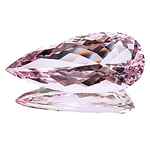
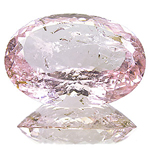
Two pink morganites from Brazil (left) and Pakistan
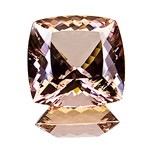
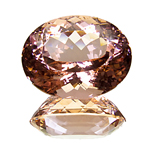
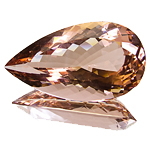
Brownish-orange morganites from Brazil.
The largest stone weighs 69.29cts
Synonyms and trade names: pink beryl, rose beryl and, wrongly, pink emerald
Can be confused with: other pink gems such as kunzite and tourmaline
Localities: the most important deposits are located in Minas Gerais, Brazil.
Other deposits in the USA, in Pakistan, Afghanistan, Burma, Sri Lanka, Russia, Madagascar and Mocambique.
Handling: morganite, like all beryls, is heat-sensitive. Can fade at 500°C. Be careful during soldering. Avoid abrupt temperature changes.
Worth knowing: most morganites are heat-treated and/or irradiated to improve colour.
Morganite shop
 Deutsch
Deutsch